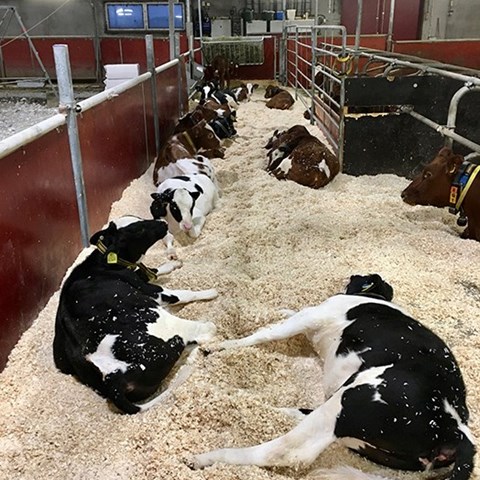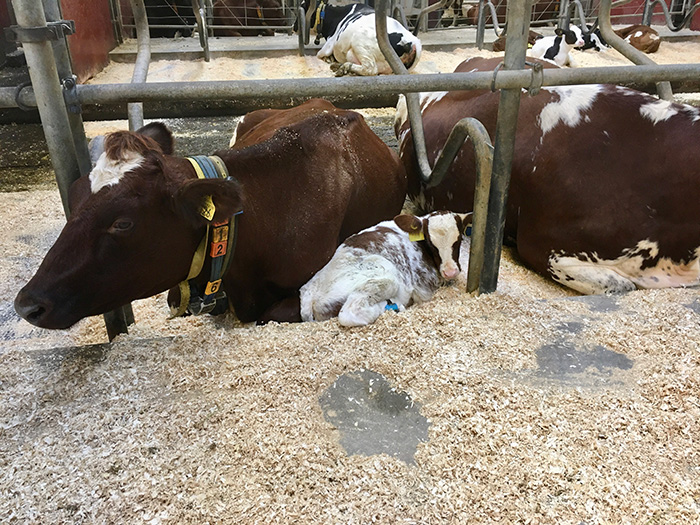Batch number 3

The third batch in the research project began on the 1st of September 2020, and included 19 cow-calf pairs, as well 18 control cows and 18 control calves. The control cows were housed in the same pen, but without access to a designated cow-calf contact area, while control calves were group housed in a completely separate area of the barn. One large difference between this batch and previous batches was the fact that it took place entirely indoors. The pen setup, however, remained largely the same as in Batch 2, although the calf creep was enlarged to accommodate the growing calves.

Photo: Claire Wegner
Having the batch remain indoors allowed the research team to record the entire experiment with cameras, positioned strategically overhead to capture every aspect of the pen. To facilitate identification of individuals for behavioural observations, all cows were marked with symbols on a weekly basis with animal-safe paint, while treatment calves wore differently-coloured collars. So far, observations collected from these video recordings has been combined with data collected from various sensor equipment (i.e. feed bins, activity monitors) to explore time budgets and lying behaviour of both treatment and control cows within this system. The video recordings will likely be used to answer further research questions in the future as well.

Photo: Claire Wegner
Weaning and separation
Two different separation strategies were applied to the 19 dam-raised calves as part of a thesis project (Bruhn 2021). At approximately 4 months of age, half of the calves were subject to weaning via nose flaps, which were worn for 14 days, after which they were abruptly separated from their dams and moved to a separate area of the barn. The remaining calves were instead gradually separated; they wore nose flaps for 7 days, followed by being physically separated from the cows by a fence for an additional 7 days. During this period of fence-line contact, cows and calves were still able to see, hear and smell one another, as well as engage in restricted physical contact (i.e. touching noses). After 14 days, these calves were also removed from the experimental pen and moved to a different area of the barn.